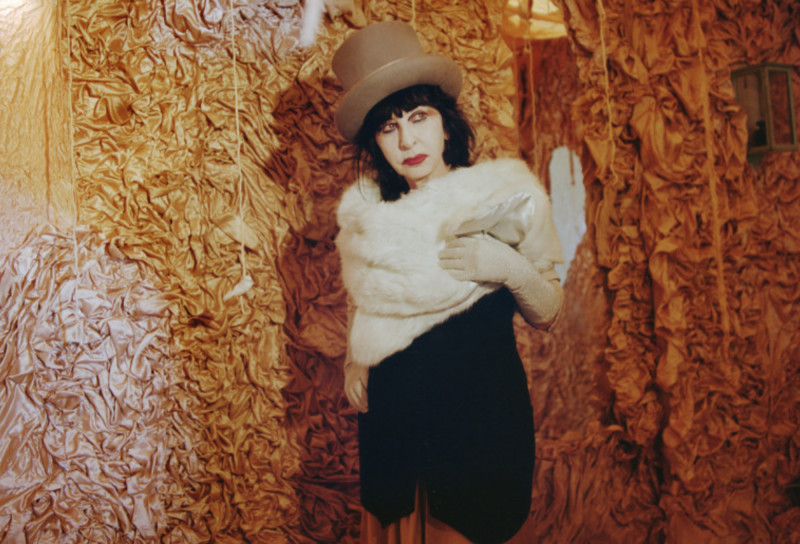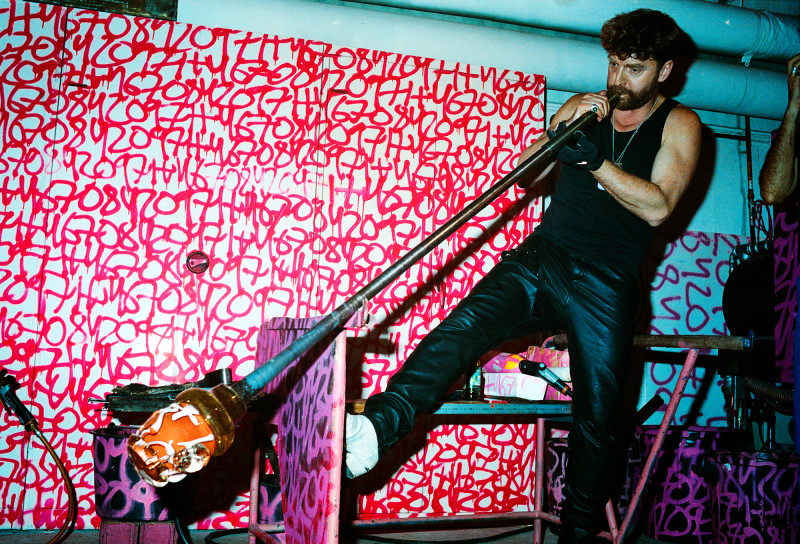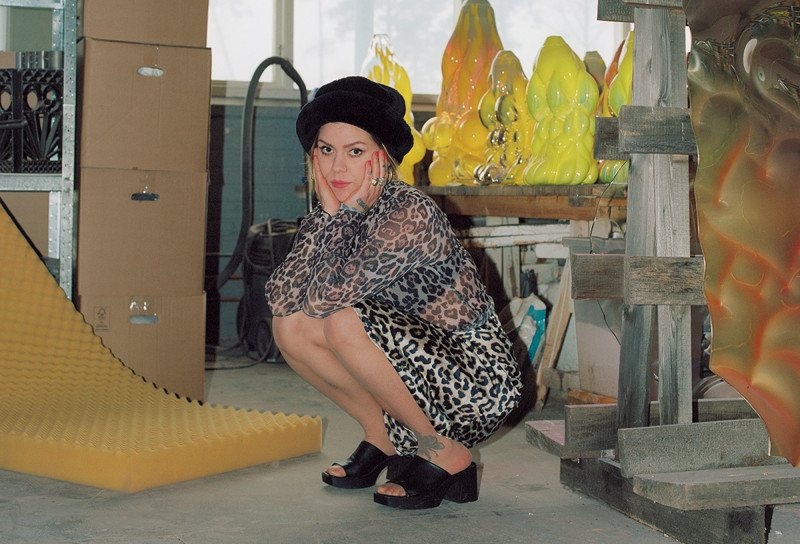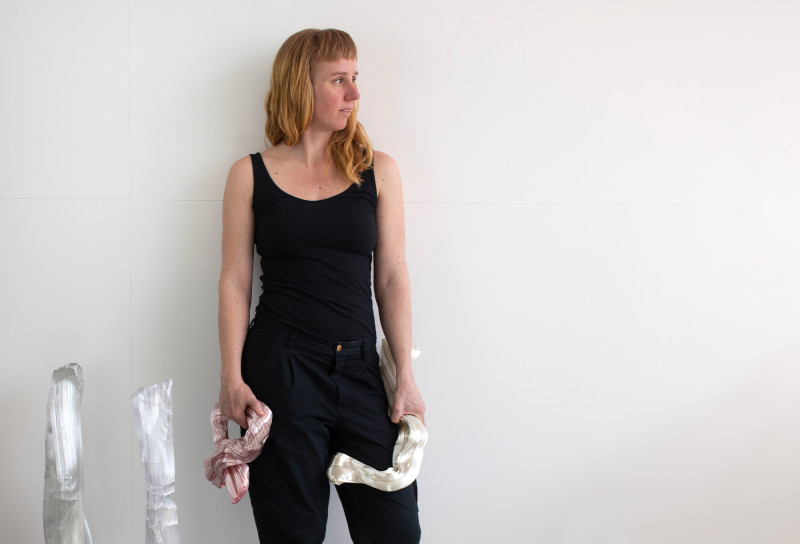Simon Klenell
Interview
June 8, 2023
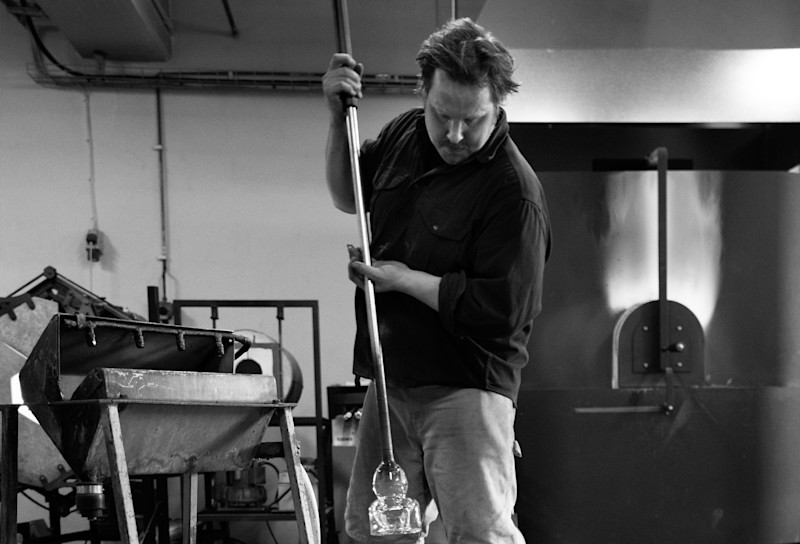
What is your background? How did you start with artglass?
— I grew up with glass. I come from a family where both my parents work with glass and then I started working with it as a teenager and got caught in it. Perhaps it came to me naturally and it became a sort of bridge into the world for me, I got to meet people
and travel.
What’s special to you about glassblowing and glass as a material?
— I’m partly drawn to glass because it’s full of contradictions. I’ve come to realise that I love amorphous materials that do not have a base structure but are just a liquid mass. It doesn’t have a melting point; it just starts moving at a certain temperature and then it becomes increasingly volatile. I think I’ve always found it exciting to push the parameter forward, the state of dissolution, and that it can be cold, hard, and sparkling and at the same time a liquid mass. It can say so many things and take so many shapes. Traditional art glass carries so many noble ways and eternal worlds, but at the same time, in your hands, it’s volatile and elusive. And, of course, the process is amazing; it’s fast, you have to respond quickly and the material allows for a very rapid chain of reflection. My workshop [Sthlm Glas] is also a social organism and meeting place. We can be
up to four or more people working on one piece and it creates a kind of hive mind. You develop and create new knowledge together, which is kind of like a dance. It’s very rewarding to be among people and those of us who work with the material are very hands on and part of a chain of oral storytelling because you can’t learn it without being in touch with someone who already knows it. Lately, I’ve been thinking a lot about being somewhere in the chain of the material’s journey.
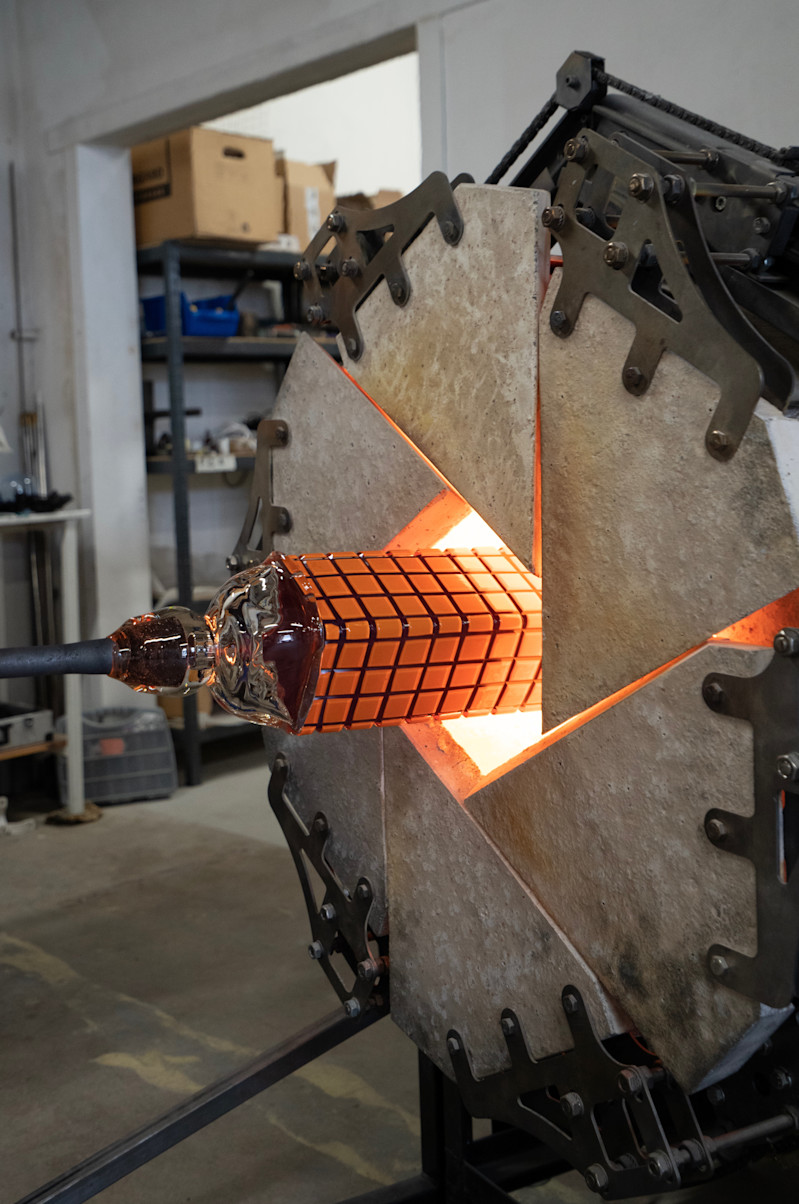
A lot of the other artists also mention the energy of those part of the process, is it an energetic moment for you?
— I agree, but for me it’s not so much about the adrenaline or the kicks. It’s more about planning, producing and succeeding. Each process you start is like a hypothesis; you have the planned and expected outcome, and then I try to get the material and the components to do what I hope they will do.
Could you tell us more about your works in this exhibition and their techniques?
— I started making this series mixing cold techniques and cut glass with hot techniques, setting the cut patterns in motion, building shapes and bodies out of that. I’ve worked with that for a long time and it’s something I often return to. I received a stipend and residency to work at Kosta glassworks where I worked together with Kosta Boda to explore this further and worked more with colour, which
I haven’t done so much before. It’s a lot about movement, body and improvisation, letting the amorphous and the structured meet. I sometimes think about that Disney clip, where he paints with the checkered paint and that’s my goal – getting that glassy expression to become so free that it’s almost like painting in the air.
— It’s been very fun and new to collaborate with these glassworks. I’m used to doing everything myself and as an artist you get to work with completely different resources and scales in the industry. The pieces in the exhibition are made in Gustavsberg by me and the team at Sthlm Glas but they are part of this larger project with Kosta Boda. It’s my first journey in this very long tradition of Swedish design history and it’s been very exciting.

What you mention about colour is very interesting, these pieces have a very strong colour palette?
— It may have had to do with the stipend I recieved, it was named after Ulrica Hydman Vallien and she made a very strong mark on Swedish glass and design, and was also a painter. Perhaps it’s an afterthought, but somewhere I think that’s why I used such strong colours and looked deep in the boxes for colours that were in stark contrast to each other. If these objects didn’t have any colour they would just look like crystal glass, so I’ve taken a step out and used colour for emphasis. I think it’s exciting to pattern something and then start twisting it so that the movements become more distinct. The colour and pattern have a function in describing movement. In some pictures that I’ve taken of these new works, they almost look like oil paint. It’s new territory for me to work with.
Gallery
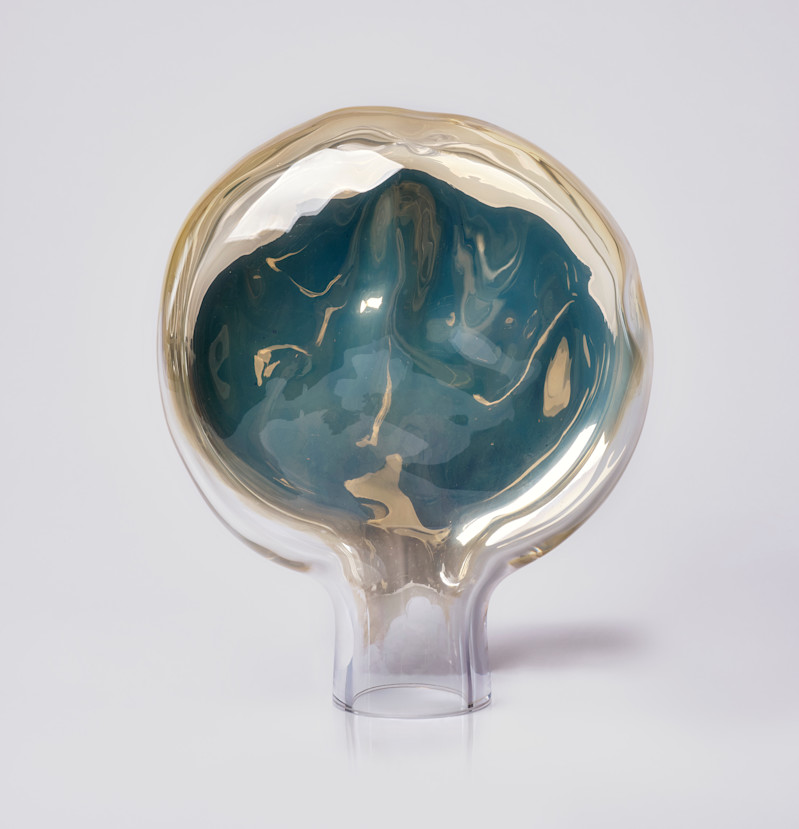
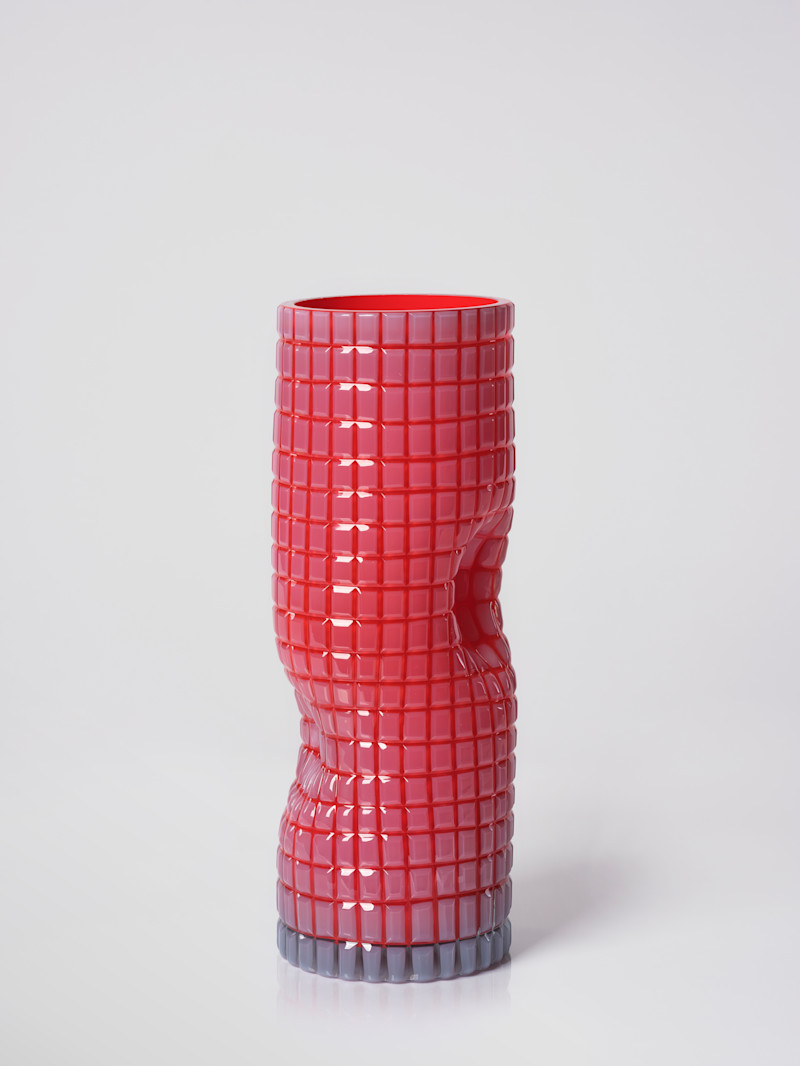
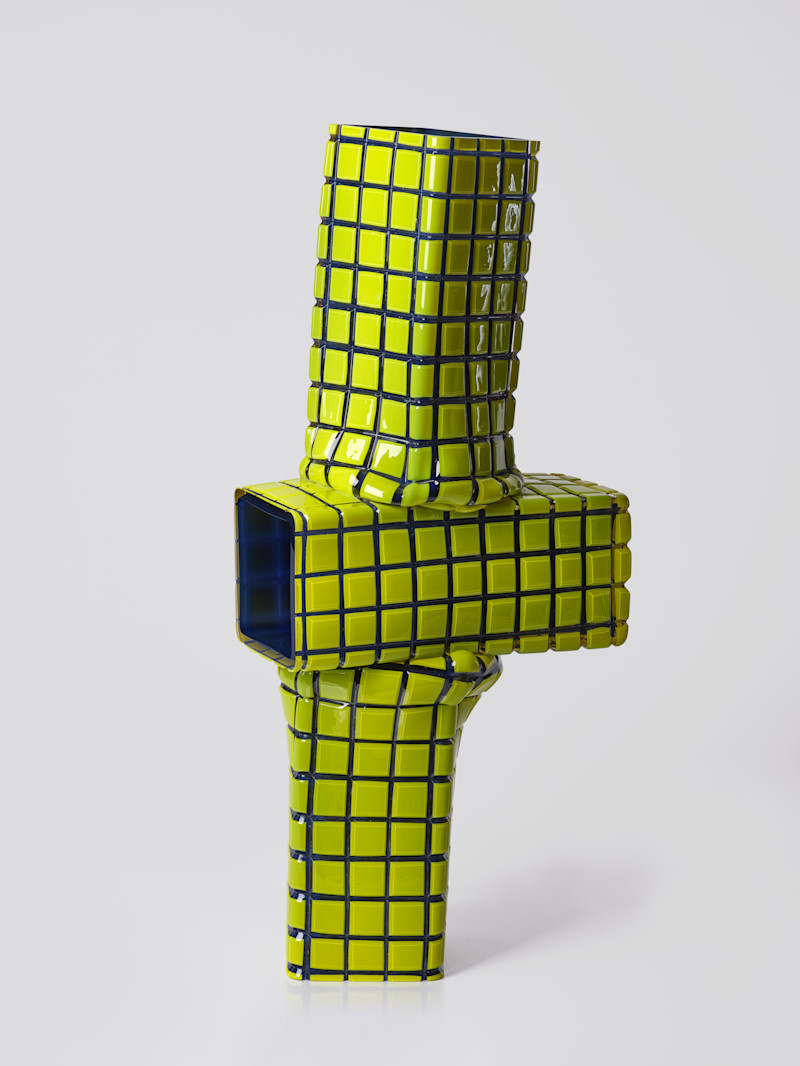
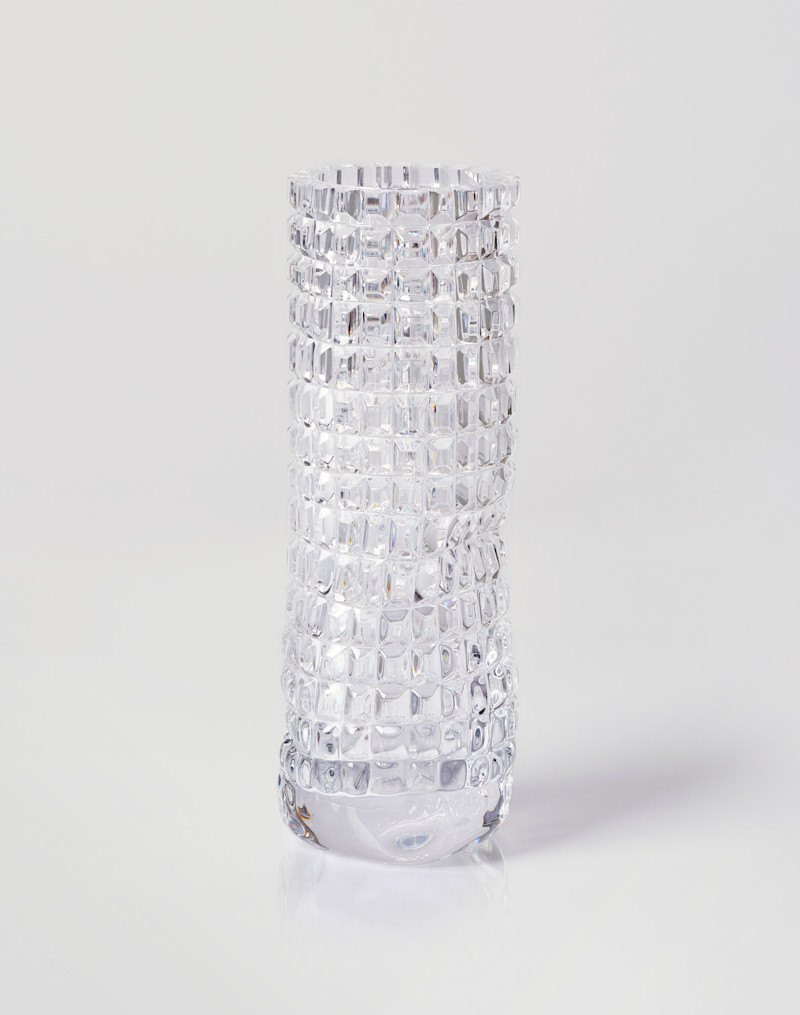
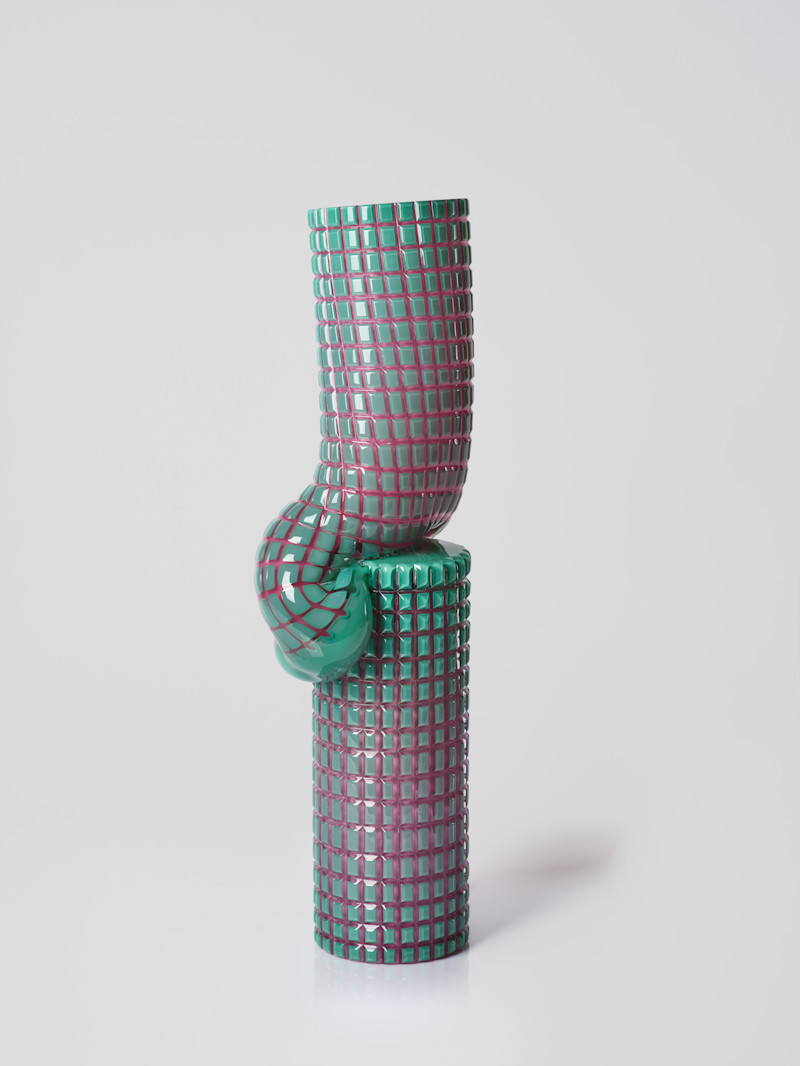
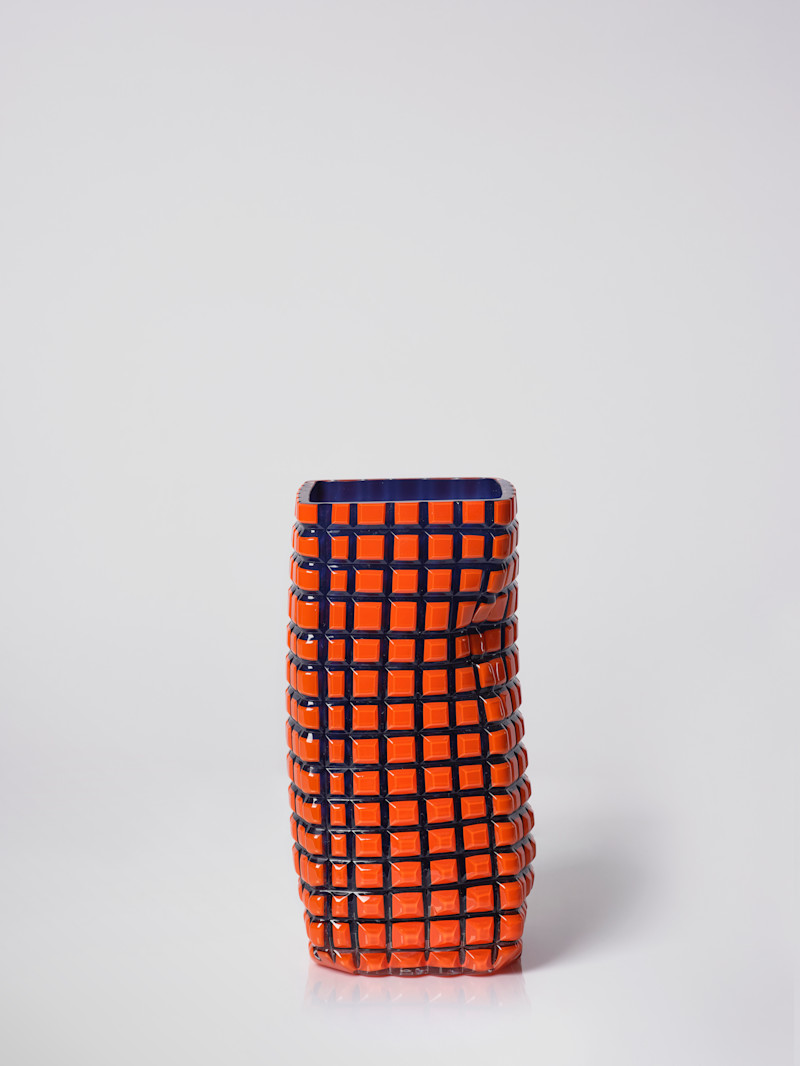
Simon Klenell






Simon Klenell Table Mirror, Himmel, 2020, Blown and mirrored glass, 42 x 34 x 14 cm
Simon Klenell Stacked Cuboid Composition, 2023, Blown and cut overlay glass, 64 x 29 x 18 cm
Simon Klenell Stacked Tubular Composition, 2023, Blown and cut overlay glass, 58 x 12 x 12 cm
Simon Klenell Cobioid, 2023, Blown and cut overlay glass, 27 x 12 x 12 cm
Simon Klenell Tubular V, 2023, Blown and cut overlay glass, 34 x 12 x 12 cm
Simon Klenell Tubular 2, 2022, Blown and mirrored glass, 20 x 7 x 7 cm
